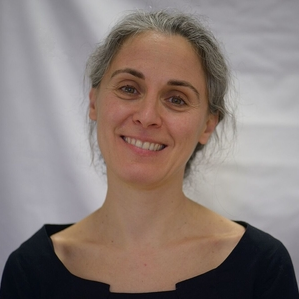Romance Languages at the Forefront of Language Acquisition Research—Volume 2
A special issue of Languages (ISSN 2226-471X).
Deadline for manuscript submissions: closed (31 December 2017) | Viewed by 57101
Special Issue Editors
2. Department of Linguistics, University of Ottawa, Ottawa, ON K1N 6N5, Canada
3. Departamento de Lenguas Aplicadas, Universidad Nebrija, 28015 Madrid, Spain
Interests: linguistic theory and language acquisition; romance linguistics; bilingualism; migrant and refugee language; contact linguistics; code-switching; pidging and creole grammars; pedagogical grammar; bilingualism and non-typical language development
Special Issues, Collections and Topics in MDPI journals
Interests: linguistic theory, comparative grammar and bilingual acquisition; language-in-contact situations (e.g., code-switching, crosslinguistic influence, natural translation, word order issues); spontaneous and experimental data analyses from simultaneous and sequential bilinguals
Special Issues, Collections and Topics in MDPI journals
Special Issue Information
Dear Colleagues,
The goal of this Special Issue is to showcase state of the art work on the L1, bilingual and non-native acquisition of Romance languages from a theoretical and empirical perspective. The volume will examine how recent learnability issues are approached using acquisition data from different Romance languages. We particularly encourage contributions dealing with different populations, including but not limited to L1 acquisition, L2 acquisition, bi/multilingual and heritage language acquisition, language processing and language disorders.
As to the projected length of the Special Issue and articles, the overall target length of this Special Issue would be 90,000 to 135,000 words with manuscripts that are between 8000 and 10,000 words in length; that is:
- Contents: Between 9 and 12 articles (with an Introduction—possibly written as a content article).
- Romance Languages: Catalan, French, Italian, Portuguese (Peninsular and/or Brazilian), Romanian and Spanish (Peninsular and/or Latin American).
- Acquisition modes and issues: L1, 2L1/Heritage, L2, language disorders, compounding, etc.
- Sections
- Primary language acquisition
- Clitic pronouns in the L1 Spanish of Down Syndrome and non-specific language impairment speakers.
- Syntax
- Galician and Portuguese
- Morphology
- Bilingual (2L1) language acquisition (Romance+non-Romance)
- Spanish/English. Narrative and morphosyntactic characteristics of the speech of a bilingual adult with Prader-Willi Syndrome.
- French/English
- Spanish/Basque
- Spanish/Quechua
- Non-primary language acquisition
- L2 Romanian (L1 English)
- L2 Spanish (L1 Arabic). Monosyllabic placeholders in child L2 Spanish.
- L2 Brazilian Portuguese (L1 Spanish). Compounding and derivation: typological proximity versus typological similarity.
- L2 Spanish (L1 Swahili).
Our tentative completion schedule is as follows:
- Abstract submission deadline: 5 June 2017 (400–450 words including bibliography)
- Notification of abstract acceptance: 5 July 2017
- Full manuscript deadline: 31 December 2017 (targeted)
Abstract submission is now closed. Authors of successful abstracts are invited to submit full papers by 31 December 2017, which will be sent out for peer review.
Prof. Juana M. Liceras
Prof. Raquel Fernández Fuertes
Guest Editors
Manuscript Submission Information
Manuscripts should be submitted online at www.mdpi.com by registering and logging in to this website. Once you are registered, click here to go to the submission form. Manuscripts can be submitted until the deadline. All submissions that pass pre-check are peer-reviewed. Accepted papers will be published continuously in the journal (as soon as accepted) and will be listed together on the special issue website. Research articles, review articles as well as short communications are invited. For planned papers, a title and short abstract (about 100 words) can be sent to the Editorial Office for announcement on this website.
Submitted manuscripts should not have been published previously, nor be under consideration for publication elsewhere (except conference proceedings papers). All manuscripts are thoroughly refereed through a double-blind peer-review process. A guide for authors and other relevant information for submission of manuscripts is available on the Instructions for Authors page. Languages is an international peer-reviewed open access monthly journal published by MDPI.
Please visit the Instructions for Authors page before submitting a manuscript. The Article Processing Charge (APC) for publication in this open access journal is 1400 CHF (Swiss Francs). Submitted papers should be well formatted and use good English. Authors may use MDPI's English editing service prior to publication or during author revisions.
Keywords
- Formal approaches to language acquisition
- Empirical approaches to language acquisition
- Primary language acquisition
- Non-primary language acquisition
- Bilingual language acquisition
- Simultaneous bilingualism
- Sequential bilingualism
- Language disorders
- Bilingualism and cognitive impairment
- Language acquisition and language contact






